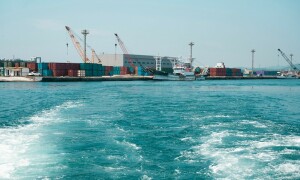Contribution of digital, IT sectors to GDP estimated at 13pc by 2025
ISLAMABAD: The Ministry of Information Technology and Telecommunication has estimated that the contribution of digital and information technology sectors to the GDP will increase to 13 percent by 2025 as the scale of the digital economy will expand sharply in the next five years.
Official documents of the ministry revealed that as the integration of digital technologies deepens in Pakistan, the scale of the digital economy will expand sharply in the next five years.
The contribution of the digital economy to GDP will continue to grow. From 2019 to 2025, the contribution of the ICT core industry to GDP will increase from 1.2 percent to 8.15 percent. The contribution of digital and IT sectors to GDP will increase from 2.7 percent to 13 percent.
Based on the available data, Pakistan’s digital economy is measured in two folds of the ICT Core Industry and Digital and IT sectors. In 2019, the contribution of the ICT core industry to the overall GDP is 1.2 percent. The contribution of the IT and telecom sectors to Pakistan’s GDP is 2.7 percent.
With the maturity of four enabling technologies—IoT, cloud computing, big data analytics, and AI—modern ICTs’ potential will be further realised to accelerate economic and social progress. According to Huawei’s study, modern ICTs will lead to a digital economy valued at $23 trillion in 2025. It is predicted that there will be 100 billion connections by 2025, helping to drive digital transformation in domains including public utilities, transportation, manufacturing, healthcare, agriculture, and finance. By that time, 85 percent of enterprise applications will be on the cloud, 86 percent of global companies will adopt AI, and data utilisation rates will skyrocket to 80 percent. This means 180 billion TB of data will be generated every year, which in turn will act as a constant source of innovative intelligence and value creation.
The ICT infrastructure and services are the foundation for countries to develop a digital economy and to increase their overall economic well-being and competitiveness. They are means to deliver quality goods and services in the areas of health care, education, finance, commerce, governance, and agriculture, among others. They can help reduce poverty and hunger, boost health, create new jobs, mitigate climate change, improve energy efficiency, and make cities and communities sustainable.
Mobile continues to be the primary way in which many users access the internet in low- and middle-income countries (LMICs). According to the ITU, in 2019, mobile accounted for 87 percent of broadband connections in developing countries. Mobile devices and networks are increasingly driving economic growth, connecting people and businesses, and delivering public and private e-services in health, education and finance, etc.
The mobile ecosystem in Pakistan plays an increasingly important role in economic growth, through its direct contribution to GDP and through driving productivity and efficiency gains across different sectors of the economy, it added.
Currently, 4G serves as the foundation of mobile broadband in most countries around the world, and its penetration rate is still growing. At the same time, the world is witnessing a transition from 4G to 5G. 4G dominates in connection and is catching up with 3G coverage. According to the latest research of GSMA, in 2019, 4G for the first time accounted for more than 50 percent of mobile connections globally. 82 percent of the populations in LMICs were covered by 4G, compared to 90 percent for 3G. It has taken LMICs around seven years to reach more than 80 percent coverage for 4G, compared to 10 years for 3G.
Copyright Business Recorder, 2022























Comments
Comments are closed.